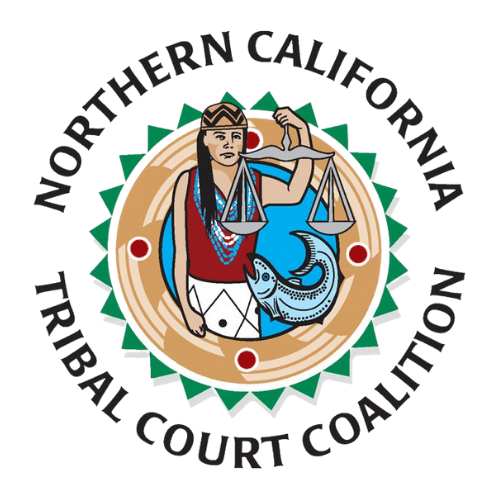CalVCB: Documenting Eligibility for Benefits
Specific documentation is very important to support your application for benefits. A police report or other crime report can show that a crime has occurred. One reason that a victim of violence should make a police report is to obtain this important documentation. If the victim chose not to report the crime or a police report is not available, the following documentation can be submitted to help show eligibility:
- Child abuse or adult protective services reports.
- Restraining Orders, including the request for restraining order (DV-100), violations of restraining orders.
- Medical, dental, or mental health records.
- Affidavit from a human trafficking case worker.
- A sexual assault examination report.
- University Title IX campus report.
- Letter (on the letterhead of a battered women’s program or shelter) identifying the incident(s).
- An affidavit from a credible witness, with as much detail as possible to substantiate (by a preponderance of evidence – 51%) that a qualifying crime occurred. This can be from the victim’s mother, friend, pastor, any trusted person to whom the victim disclosed the crime.
- Special visas describing a qualifying crime.
- Form 293 if a police report does not specifically identify the victim for confidentiality concerns (e.g. she is named as “Jane Doe”).
If you have questions about documenting your eligibility for CalVCB benefits, contact your local Victim Witness Assistance Center advocates for assistance with filing your application. Advocates can help you navigate the criminal justice and victim compensation process and can provide information on resources and services in your county. You can also visit the CalVCB Local Help page to find local help for your particular situation.
- Published in Uncategorized
Tribal Courts Operations and the COVID-19 Pandemic
In September of 2021, NCTCC staff interviewed NCTCC Board members, Hon. Judge Leona Colegrove, Chief Judge for Hoopa Tribal Courts, and NCTCC Secretary Megan Siaosi, Bear River Band Rohnerville Rancheria Tribal Court Director, to learn about the effects COVID-19 has on Tribal Courts.
What is a Tribal Court?
Tribal Courts are an inherent part of exercising Tribal sovereignty in order to resolve disputes in Tribal communities. There are over 400 Tribal Courts in operation and each have their own methods of administering justice.
How can Tribal culture be incorporated into the Tribal Courts?
Incorporating Traditional Tribal Justice systems is a cultural approach to justice within Tribal communities. According to Judge Leona Colegrove, while western culture brings a linear, hierarchical process to justice, the Tribal judicial system is horizontal. Traditionally, the whole community would come together to administer justice to those who broke the law or to settle a dispute in Indian Country. There was not one person stating the law, there were elders, family members, groups, and different leaders who administer justice. This is how it has always been in Tribal communities.
What is a Wellness Court?
A Wellness Court is a type of Tribal Judicial Court that integrates wellness concepts into substance abuse cases by using a team approach to provide a service for the court client while aiding to restore community balance.
How Have Tribal Court Operations Been Affected During COVID-19?
Applying COVID 19 within the traditional Tribal Justice horizontal approach makes it difficult to come together as a community. Judge Leona Colegrove explains how issues of vulnerability and outreach methods have become challenges to Tribal Courts during COVID-19. Megan Siaosi, Bear River Court Administrator, explains how COVID-19 has affected communication and synergy in the Bear River Band Tribal Court.
Vulnerability: Tribal groups are already living in a community with a more vulnerable population than others. Tribal communities make up less than 2 percent of the population. In Tribal communities we hold our elderly population as very sacred because they hold so much knowledge about our past and culture and often this knowledge is not recorded anywhere; if we lose that it is just gone. This is a disease that can literally wipe out an entire elderly population of our people simply because there are not very many of us.
Outreach: In the recent past, we adopted a western style of justice that hasn’t worked well for us. People are used to this approach to justice. We need to shift back to the way things used to be before Tribes adapted to the western Courts. People don’t always like change, so we need to educate and outreach. This means providing outreach in the form of dinners, community events, and feeding people, which is difficult to do during COVID 19. So we need to think outside the box with how to build community outreach.
Communication & Synergy: Tribal Courts are based around mediation. Mediation is built with trust and personal communication. Body language and sitting in a room on the same level as others while talking through issues comes through differently when talking on the phone or while at a zoom meeting. There is a lack of personal and emotional connection. When we talk about the traditional restorative style of transitional justice, it is lacking with zoom online meetings, because the connections can not be forged.
How Can Tribal Courts Overcome the Challenges of COVID-19?
According to Megan Siaosi, strong Tribal leadership and resilience is key:
“Indigenous Peoples have proved time and again how resilient they are. As a whole, zoom is helping us to come together to find solutions to these problems. We are becoming experts of technology when before we were trying to become experts on learning how to run meetings interpersonally. The Bear River Band Rohnerville Rancheria Tribal Council is always thinking about promoting the safety of the community. Strong leadership during this time is very important.”
- Published in Uncategorized
Compensation Benefits for Victims of Violence
California victims of qualifying crimes who suffer physical injury, threat of physical injury or emotional injury as a direct result of a violent crime may qualify for CalVCB assistance.
Each applicant is eligible for a total of up to $70,000 in a wide range of CalVCB expense categories related to the crime such as medical costs, mental health treatment, relocation (including pet relocation/sheltering), burial and ceremonial costs, and complementary and alternative medicine services.
CalVCB can help pay for a wide range of expenses related to the crime such as medical costs, mental health treatment, relocation (including pet relocation), burial and ceremonial costs, and complementary and alternative medicine services. In some situations, CalVCB can provide emergency financial assistance within 30 days. For example, you may qualify if your personal safety is at risk, and you need to relocate.
Below are some examples of crime-related expenses CalVCB can pay, with dollar caps for each category in parentheses. When in doubt, submit the expense, justification, and supporting documentation with your application.
- Crime scene clean up ($1,000)
- Funeral and burial expenses ($7,500)
- Good Samaritan benefits ($10,000)
- Home ($70,000) or vehicle ($30,000) modifications for victims who became disabled
- Income loss ($70,000, note: if applicable, this category should be prioritized)
- Job retraining ($70,000)
- Medical and dental treatment, including in-home care and telehealth ($70,000)
- Medically necessary equipment ($70,000)
- Mental health services ($10,000)
- Relocation (including pet relocation) ($2,000)
- Residential security ($1,000)
- Service dogs ($10,000)
- Support loss ($70,000)
There are certain types of expenses that CalVCB cannot cover. These include:
- Expenses not related to the crime or injuries incurred, including expenses for lost, stolen or damaged property;
- Medically necessary equipment (wheelchairs, medical beds, glasses, crutches, hearing aids etc.);
- Food, clothing, phone, etc. if a victim needed to relocate for immediate safety;
- Expenses paid by insurance or another source of reimbursement or coverage; and
- Expenses incurred while a person is on parole, probation or post-release community supervision for a violent felony, or while incarcerated or required to register as a sex offender. This does not affect an application’s eligibility. It instead stops payment for expenses that are incurred during incarceration, felon or registered sex offender status.
Find a convenient Compensation Benefit Reference Guide of expenses and limits here.
If you have been a victim of violence and are unsure whether your expenses can be compensated, CalVCB recommends you submit the expense, justification, and supporting documentation with your application.
Use these links to access more information about CalVCB
- Call them at: 800.777.9229
- Visit their website at: https://victims.ca.gov/
- See their FAQs: https://victims.ca.gov/for-victims/frequently-asked-questions/
- For advocates: https://victims.ca.gov/for-advocates/
- Video training series for advocates: https://victims.ca.gov/for-advocates/elearning/
- CalVCB forms can be found here: https://victims.ca.gov/forms/
- CalVCB publications can be found here: https://victims.ca.gov/publications/
- Email them at: info@victims.ca.gov
- Published in Uncategorized
Moving to Safety Quickly: A survivor’s right to move before their lease ends
By Taylor Campion, Senior Managing Attorney, Family Violence Appellate Project
Complicated obstacles make escaping abuse safely challenging for survivors of domestic violence. This is especially true when a survivor needs to leave their home quickly and has few financial resources. For survivors who are tenants, an ongoing lease should not be an obstacle because California law allows domestic violence survivors to end a lease early without financial penalty (1).
Specifically, California Civil Code Section 1946.7, lets survivors of domestic violence, sexual assault, stalking, human trafficking, elder or dependent adult abuse and survivors of crimes that caused injury or crimes that involved a deadly weapon, force or threat of force to move out of their rental unit before their lease ends (2). It also lets a survivor’s household member or immediate family member move out before their lease ends (3). The law prohibits landlords from charging an early lease termination fee or rent for the rest of the lease term (4).
A survivor may end their lease with as little as 14 days’ notice. So, after giving their landlord proper written notice ending the lease, the survivor only owes rent for 14 days (5). If the landlord re-rents the unit in less than 14 days, the landlord must return the rent to the survivor for the days the unit is rented by someone else (6).
To end their lease early, the survivor must give their landlord written notice stating the survivor is ending their lease early and a document that verifies they are a survivor (7). The survivor, not the landlord, gets to choose which of the following four documents they use to verify they are a survivor:
- a copy of a restraining order or protective order issued within the last 180 days, that protects the survivor, or
- a copy of a police report issued within the last 180 days, confirming that the survivor filed a report alleging they are a survivor, or
- a Qualified Third Party Letter verifying that the survivor is a survivor, or
- any other documentation that reasonably verifies the crime or act of abuse (8).
The law does not give examples of what other documentation can verify the crime or abuse, but emails or voice messages containing threats from the person who committed the abuse or crime could verify the abuse or crime (9).
After a survivor ends their lease early, the landlord should return their security deposit as usual (10). This means, the landlord must return the security deposit or provide an itemized list of deductions no later than 21 days after the survivor moves out of the unit (11). If the landlord does not return the survivor’s security deposit correctly, the survivor may be able to sue them in small claims court for the remaining security deposit and up to two times the cost of the security deposit (12).
A survivor’s right to break a lease early is an important legal tool in the fight to end domestic violence. By reducing survivors’ financial barriers to breaking a lease, the early lease termination law helps survivors stay safe and leave abuse faster.
Sources
(1) Cal. Civ. Code § 1946.7.
(2) Id. at § 1946.7, subd. (a).
(3) Id. at § 1946.7, subd. (a).
(4) Id. at § 1946.7, subd. (e).
(5) Id. at § 1946.7, subd. (e).
(6) Id.
(7) Id. at § 1946.7, subd. (b).
(8) Id.
(9) Id; Assem. Floor Analyses, 3d reading analysis of Sen. Bill No. 1190(2019-2020 Reg. Sess.) Aug 21, 2020, p. 2-3.
(10) See generally Cal. Civ. Code §§ 1950.5 & 1946.7.
(11) Id. at § 1950.5, subd. (g).
(12) Id. § 1950.5, subd. (l).
- Published in Above the fold, Uncategorized


